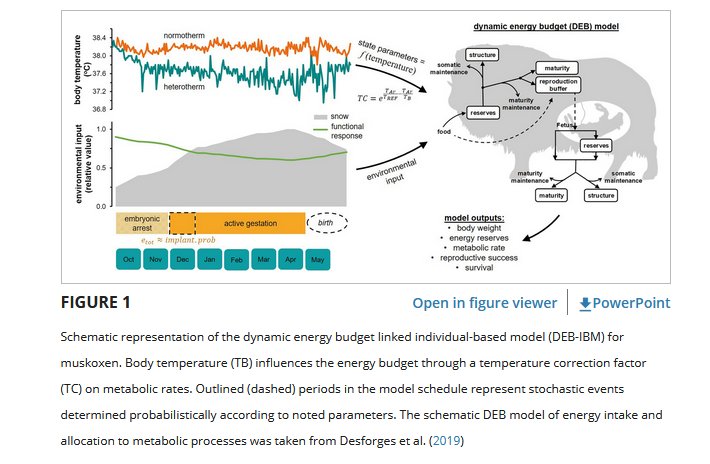Quantifying energetic and fitness consequences of seasonal heterothermy in an Arctic ungulate
New publication by Jean‐Pierre Desforges, Floris M. van Beest, Gonçalo M. Marques, Stine H. Pedersen, Larissa T. Beumer, Marianna Chimienti, Niels Martin Schmidt

Abstract:
Animals have adapted behavioral and physiological strategies to conserve energy during periods of adverse conditions. Heterothermy is one such adaptation used by endotherms. While heterothermy—fluctuations in body temperature and metabolic rate—has been shown in large vertebrates, little is known of the costs and benefits of this strategy, both in terms of energy and in terms of fitness. Hence, our objective was to model the energetics of seasonal heterothermy in the largest Arctic ungulate, the muskox (Ovibos moschatus), using an individual‐based energy budget model of metabolic physiology. We found that the empirically based drop in body temperature (winter max ~−0.8°C) overwinter in adult females resulted in substantial fitness benefits in terms of reduced daily energy expenditure and body mass loss. Body mass and energy reserves were 8.98% and 14.46% greater in modeled heterotherms compared to normotherms by end of winter. Based on environmental simulations, we show that seasonal heterothermy can, to some extent, buffer the negative consequences of poor prewinter body condition or reduced winter food accessibility, leading to greater winter survival (+20%–30%) and spring energy reserves (+10%–30%), and thus increased probability of future reproductive success. These results indicate substantial adaptive short‐term benefits of seasonal heterothermy at the individual level, with potential implications for long‐term population dynamics in highly seasonal environments.
